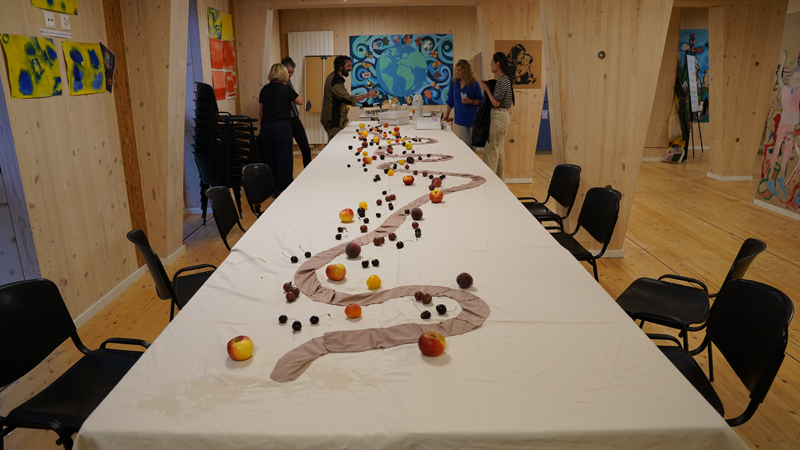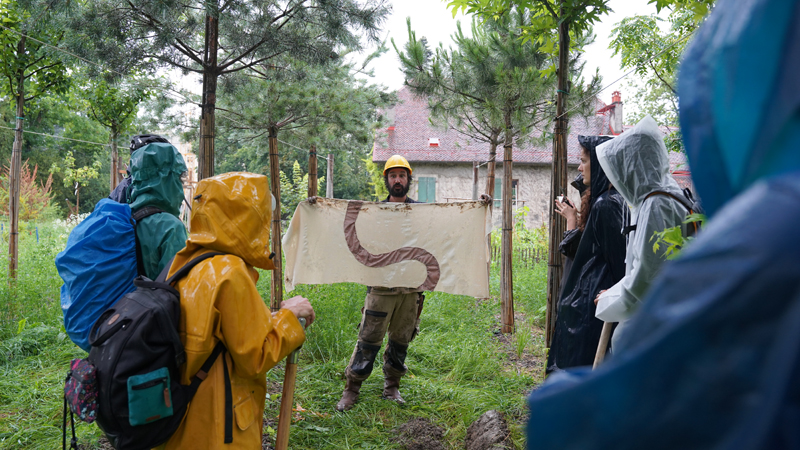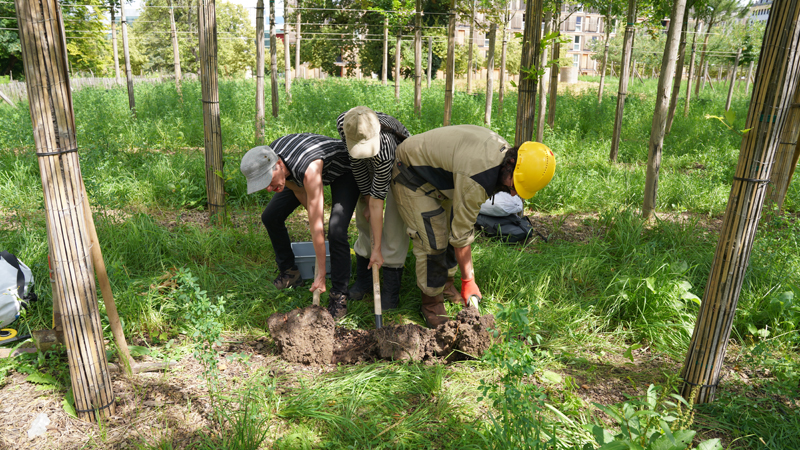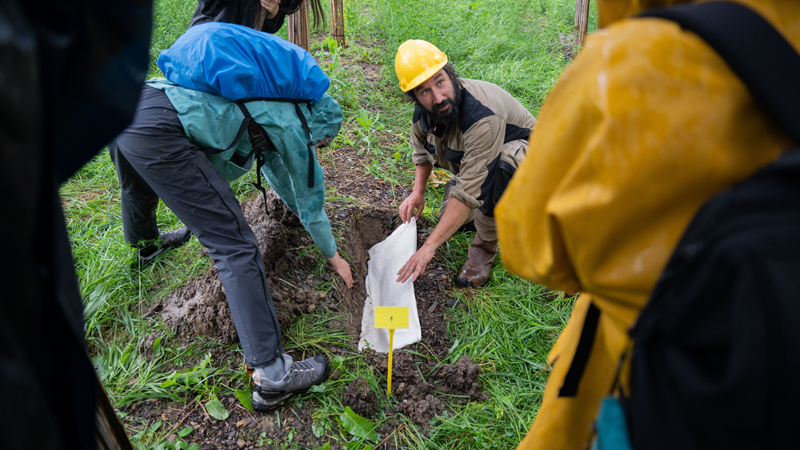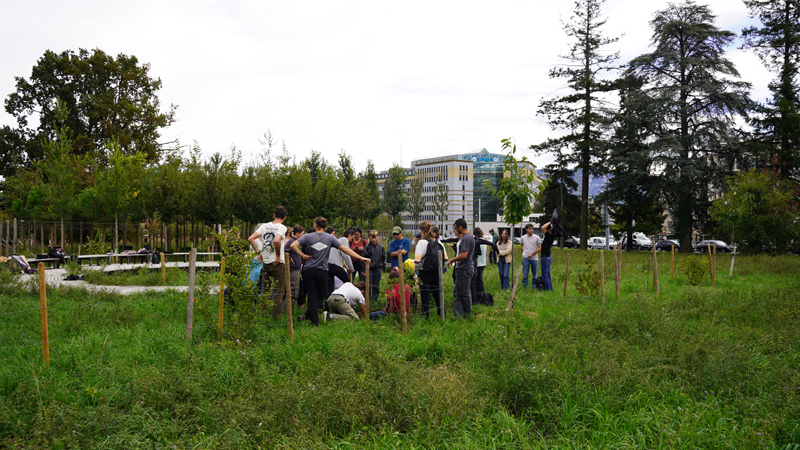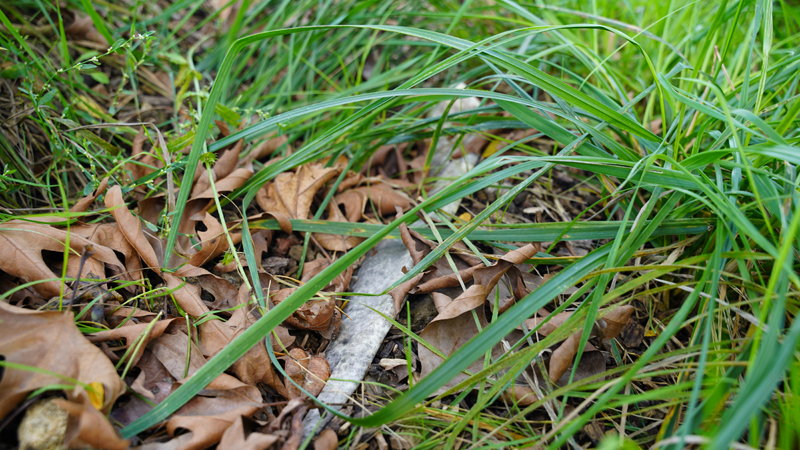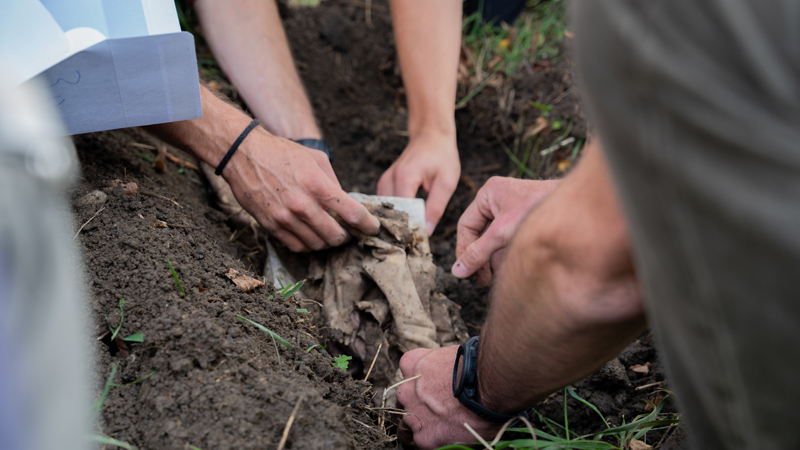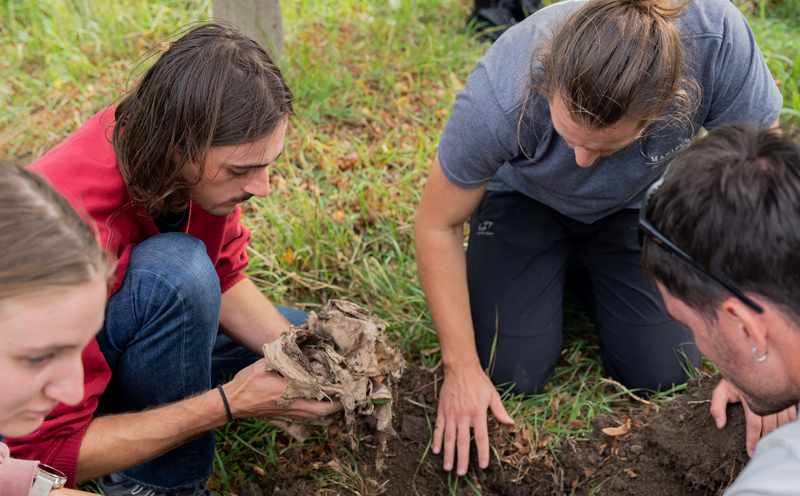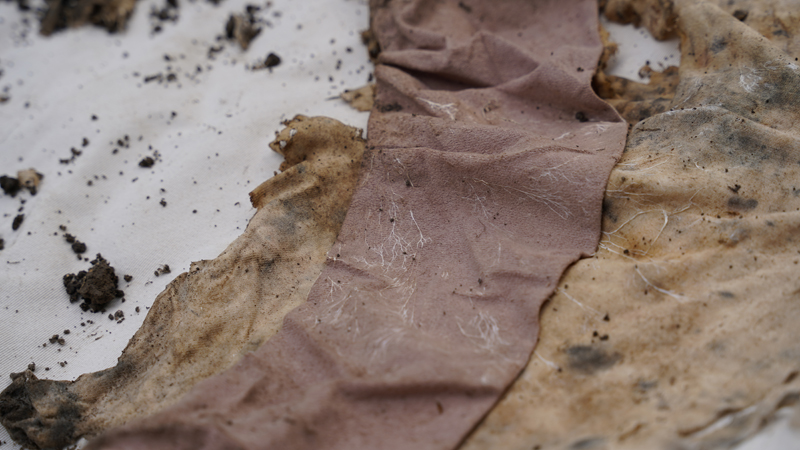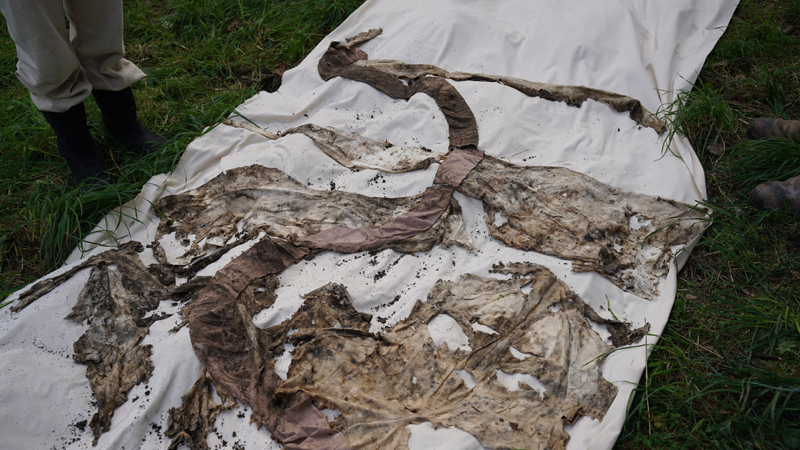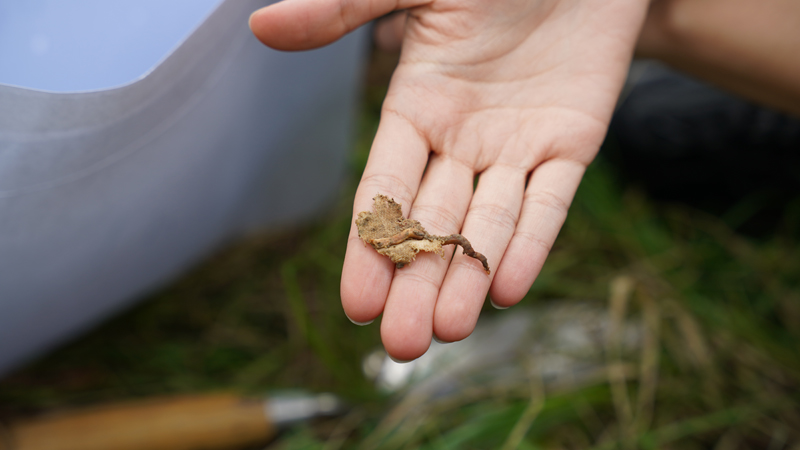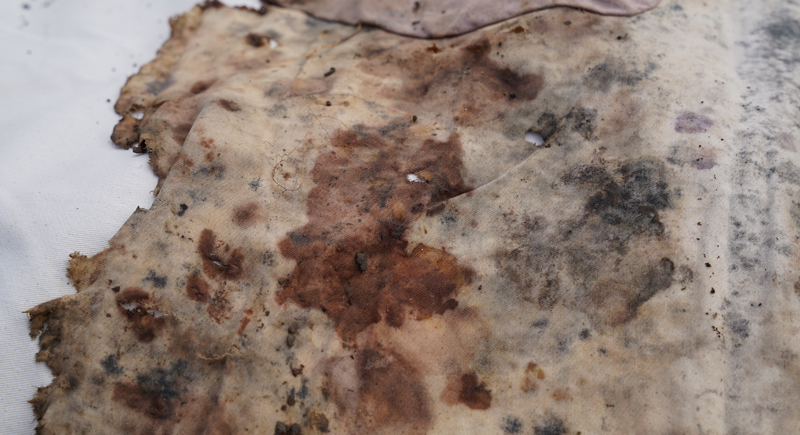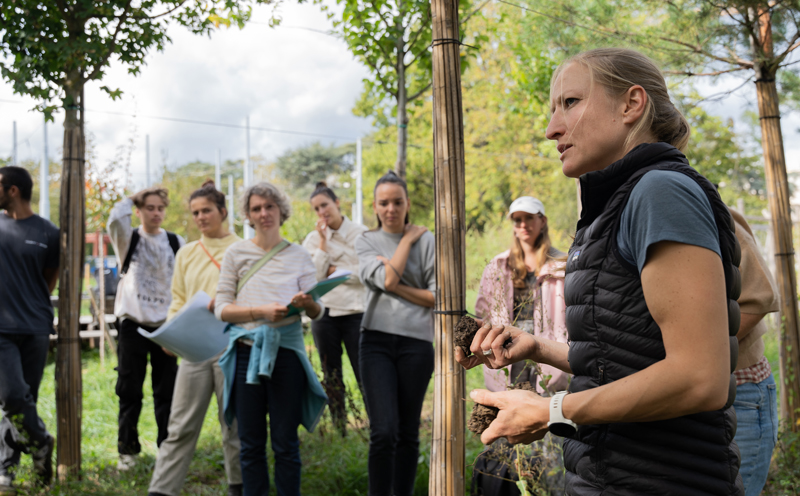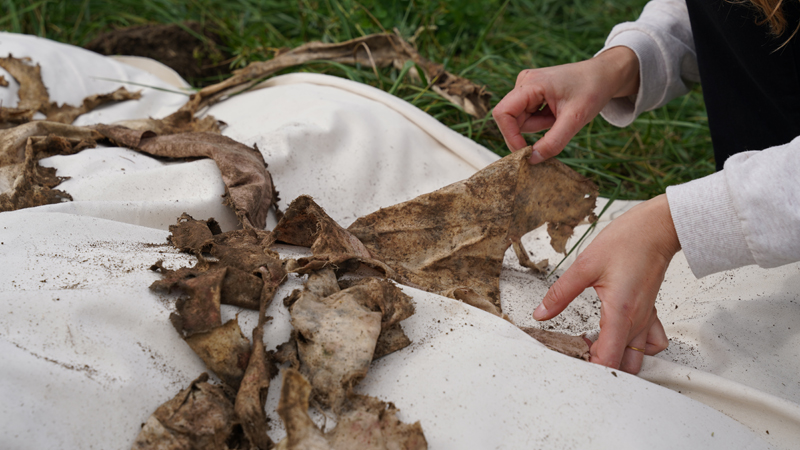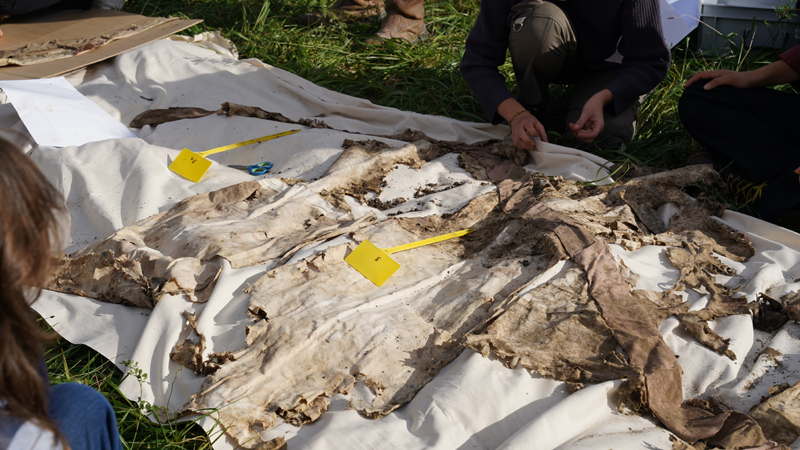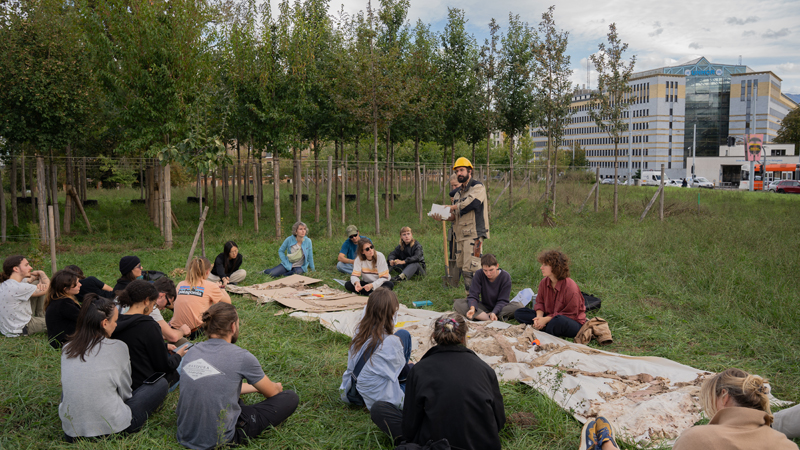laboratoire écologie et art pour une société en transition
Living Soil
Although we walk on it every day and it is essential to our food security, we rarely consider the importance of soil in our lives. What crucial roles does soil play in maintaining the balance of ecosystems? How can we protect it? And how can artistic practices help?
Below is an interview with Karine Gondret, a trained soil scientist and geomatician, HES-SO research associate and lecturer at the Geneva School of Landscape, Engineering and Architecture (HEPIA). Her research focuses on soil quality assessment and mapping.
What is pedology?
A branch of soil science, pedology focuses on the study of soils, i.e. the interactions between living organisms, minerals, water, and air that take place beneath our feet. In pedology, we examine everything that lies between the surface and the first, purely mineral layer, i.e. around 1.50 m deep in our latitudes. Beyond that, when only minerals remain, we enter the field of geology. The role of the pedologist is also to map the soil.
What is meant by good quality soil?
Broadly speaking, good quality soil is soil that is capable of performing the functions necessary for the survival of all living organisms and their environment. Several functions are very important, beyond the most obvious, that of food or biomass production. Soil infiltrates, purifies, and stores water, and recycles nutrients and organic matter. There is also the genetic reserve function, which is still seldom studied. Penicillin, for example, was discovered in the soil. So it’s crucial to protect our soils.
What parameters need to be taken into account to assess the quality of a soil according to its functions?
In general, the higher the organic content of soil, the better it is able to perform its functions. By organic, we mean all living things (earthworms, micro-organisms, bacteria, etc.) and all carbon-rich compounds derived from living things (corpses, excrement, roots, dead leaves, compost, root and bacterial exudates, etc.). Functioning soil is living soil, and much more!
There are several other essential parameters, such as soil depth, pH, texture, porosity, etc. Depending on the function, certain parameters will be more or less important. For example, the function of supporting human infrastructure (roads, buildings, etc.) will inevitably be detrimental to the biomass production function. That’s why politicians have to make choices about the functions they want to protect.
Why is the presence of organic matter in soils important?
Organic matter is the basic food source for the soil’s fauna and micro-organisms. It is continually broken down by soil life into nutrients that are accessible to plants via soil water. Organic matter also improves soil porosity. Porosity is essential for the proper development of life, as it allows nutrient-rich water, air, and roots to circulate. Without this porosity, exchanges are much less effective, and as a result, its functions are much less effective.
In addition, organic matter is capable of increasing the soil’s capacity to store water and of mitigating flooding in towns downstream. It can also retain nutrients and pollutants through its electrical properties. Finally, organic matter that is stabilised in the soil contains around 60% of carbon, and the more it increases in the soil, the more we limit global warming, because all the carbon that is not stored in the soil goes into the atmosphere in the form of CO2.
We’ve talked about what good soil is for humans, but what about the “more than human” world?
As defined by the Food and Agriculture Organisation (FAO), soil performs functions that are essential to humankind. In truth, these functions are essential to the proper functioning of ecosystems, and humans simply benefit from them. For example, many pollinators spend part of their life cycle in the soil. These pollinators make it possible to obtain fruit and feed wildlife, which is beneficial for natural environments. But this fruit also benefits humans within agricultural and economic infrastructures, when it is sold. Humans and the environment are deeply interconnected, although we tend to forget this. Finally, compared to about fifty years ago, the organic matter content in most agricultural soils has halved. This means that these soils are becoming increasingly less effective at performing the functions they provide for us.
Images: Thierry Boutonnier, Comm’un sol, 2024. Photo: ©Eva Habasque.
As part of the Faire Commun research project, artist Thierry Boutonnier devised a method for sensitively assessing the quality of the soil in Parc Rigot. He organised a picnic on a long organic cotton tablecloth, which was then cut into pieces and buried in different areas of the park. After a few months, the tablecloth was dug up, and the amount of fabric consumed thanks to the soil’s bioactivity provided concrete information about its characteristics. What did you observe?
We haven’t yet finished carrying out the analyses in Parc Rigot, but we’ve observed the soil’s capacity to degrade organic matter through this experiment. In the soil, micro-organisms release enzymes that degrade organic matter (here the cotton tablecloth). We also observed that these micro-organisms were not all equally active: in some areas of the park, the organic matter was broken down very efficiently, while in other areas, the process was much slower. This means that in these areas, there are fewer nutrients available for the plants that grow.
People often don’t realise that there is diversity of soils, even in small areas. In the city, as in Parc Rigot, this diversity is even more marked because humans have had such a strong impact on the soil. There have been many interventions – areas have been completely renatured, others stripped, or artificially added – and this has led to a juxtaposition of very different soils. The challenge is to identify the areas that really work, and protect them.
Is it possible to improve soil quality?
When soil doesn’t have the necessary quality for a given function, we can intervene to improve it, for example by adding organic matter or by decompacting it (in compliance with the OSol ordinance in Switzerland). Nevertheless, soil quality only improves very slowly; sometimes it takes several human generations, sometimes improvement is impossible. Soil is a non-renewable resource, as it takes a very long time to create: it is said to increase by an average of 0.05 millimetres per year. In very steep areas, it even becomes thinner and thinner.
It can also deteriorate rapidly. It looks solid and is thought to be immutable, but nothing could be further from the truth. Even when we’re trying to improve its quality, we have to be very careful, because every intervention on the soil leads to its deterioration. It’s a delicate process that doesn’t always work – we’re still experimenting.
Soil is at the intersection of physics, biology, and chemistry. It’s a complex world, and by no means do we know everything about it. So it’s all the more important to protect it, because it’s where all plant nutrients are found, and as they develop, they form the basis of the diet of all mammals. The soil is truly the place where life is created.
